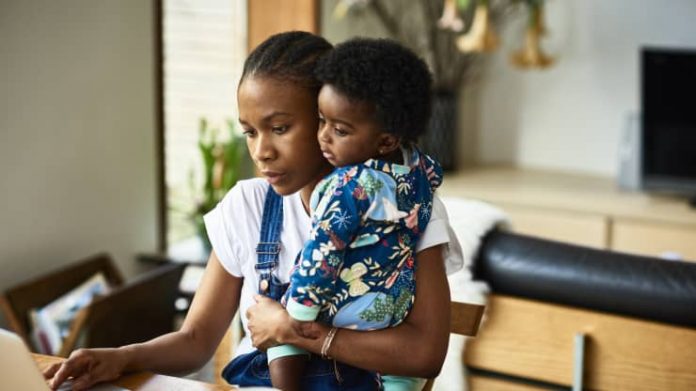September marked another month of slow job growth, with the economy adding just 194,000 positions, according to the Bureau of Labor Statistics. Men gained all of September’s new jobs while more than 300,000 women left the labor force, the largest drop-off of women from the workforce since September 2020, reports the National Women’s Law Center.
At September’s rate, it would take more than two years for the economy to gain back the nearly 5 million jobs lost during the coronavirus pandemic, according to the NWLC analysis. Women have continued to bear the brunt of pandemic job losses, losing 26,000 jobs in September while men gained 220,000 positions.
It’s no coincidence that sharp declines in women’s labor force participation have happened at the start of the school year twice during the pandemic, Emily Martin, the vice president for education and workplace justice at the NWLC tells CNBC Make It. “Back to school requires a shift in caregiving arrangements, which is why we saw a big loss of women in the workforce last September,” Martin says. “If your kids were in an all-day summer camp, for example, and now you need to pick up your children from school earlier, the system you had doesn’t work anymore.”
The pandemic has continued to complicate childcare arrangements, even a year later, Martin adds, “because there’s still a lack of available childcare and some schools haven’t re-started their after-school programs yet … all of that, I suspect, is why we see September as a moment when women feel like they just can’t balance childcare and work anymore.”
Another factor driving women out of the labor force that Martin points to is new coronavirus cases tied to variants of the virus. “Women disproportionately shoulder caregiving obligations in this country, whether it’s for kids or for sick family members,” she notes.
Martin predicts that as younger children are able to get their coronavirus vaccinations, we could see a surge in women re-entering the workforce. “As more young kids are vaccinated, parents may feel like they have more safe childcare options,′ she says. “Vaccines for children are part of the bigger process of reopening the world and returning to normal.”
Women lost jobs across several major industries in September, including government, education and health services, according to the NWLC’s analysis. Leisure and hospitality drove job creation, adding 74,000 new positions. Women, however, only gained about 9.5% of those jobs.
Unemployment rates dropped for some groups of women in September, including Black women, who faced an unemployment rate of 7.3%, down from 7.9% in August. Latinas fared slightly better, facing an unemployment rate of 5.6% in August, down from 6% in August. The overall unemployment rate for women ages 20 and over decreased to 4.2% in September from 4.8% in August.
Still, the number of women who are long-term unemployed remains alarmingly high. About 36% of unemployed women, however, have been out of work for 6 months or longer. “That factor itself can drive more women to exit the labor force, because if you’ve lost work and have been looking for a long time, it’s hard to see the light at the end of the tunnel,” Martin says.
The ongoing pandemic has led to a rise in depression and anxiety disorders for people all over the world, but according to CARE International, women (especially mothers) are experiencing such mental strain at a higher rate. “Women have disproportionately felt the consequences of pandemic unemployment, but they’ve also disproportionately been the ones who are our safety net after the caregiving infrastructure broke down,” Martin says. “A lot of stress and anxiety, then, stems from all the burdens these women are shouldering.”
Employers can help retain and recruit more women at their companies by granting employees more flexible work schedules, being transparent about work responsibilities and reviewing their paid time-off policies, Martin suggests. “All of these things are really important to ensure that people with caregiving responsibilities don’t lose their job when their kid has to suddenly quarantine after a school exposure or a relative falls ill,” Martin notes.













